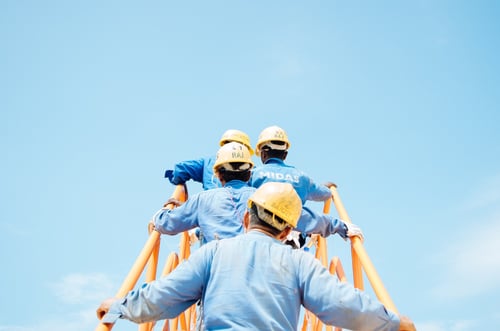
Safety Day is a win-win situation because employees also have everything to gain. They benefit from a better knowledge of prevention issues, whatever their job or hierarchical level. In the long term, one finds a noticeable improvement in the well-being of employees at companies that organize occasional discussion sessions on health and safety issues. This day also represents a fun and friendly moment to share with colleagues and superiors, which helps to strengthen ties and a feeling of belonging at the company.
A few figures on well-being at work
To give you an idea of the importance of observing a Safety Day, as well as the stakes involved, here are some figures about health and safety at work:
- Three out of five European employees report WMSDs (European Agency for Safety and Health at Work)
- 43% of workers have reported experiencing stress in 2019 (Global Workplace 2021 Report)
- 62% of employees consider well-being support programs/benefits as a top priority when applying for their next job (HR Today)
How to organize a Safety Day?
Your Company Health and Safety Day must be tailored and adapted to your needs. If this is your first run, you might consider seeking the help of specialized service providers. Just bear in mind that the event must remain fun and friendly!
Here are some fundamental steps to follow:
- Communicate before your event: get the word out about your Safety Day via email invitations, posters on internal discussion boards, etc. Involve all departments, if possible, to make to the event more impactful and to generate interest among your employees.
- Put out a participation order: the number of participants is important, which is why it may be wise to make Safety Day mandatory. Have a participation order in small groups that may easily share about worker health and safety, and maintain a good level of focus.
- Make your day fun: alternate between different educational modules; in theory and in practice. Hazard prevention doesn't have to be boring! Be creative to get (and keep) employees interested.
- Challenge and reward participants: to boost participation, there is nothing better than offering rewards. You can also set up a safety challenge to promote team spirit and cohesion. However, there are essential steps and rules to follow to launch a challenge.
- Continue to communicate after Safety Day: this day must be seen as the jumping-off point (or continuity) of a culture of prevention. It will foster the asking of questions and discussions between participants; subjects to be discussed in the weeks to following.
Some ideas for your work safety day
We recommend that you organize a made-to-order Safety Day using tools, themes and activities that are adapted to your operation. For inspiration, here are some ideas that generally work very well in unifying teams:
- Training: training on MSDs, on first aid in the workplace or on gestures and postures to adopt at work, on muscle awakening and ergonomics, on being first aid givers in the workplace, etc.
- Workshops: osteopathy sessions, muscle warm-ups, massage sessions, risk or fall simulators, yoga sessions for the eyes, meditation classes, chair yoga classes, etc.
Despite the attention it gets in April, Safety Day should be seen as a daily effort: safety and prevention at work must be a constant concern! You can set up simple, concrete and recurrent events to keep the safety culture alive and kicking at your company: dedicated newsletters, prevention plans, long-term training sessions, sportive workshops, etc.




